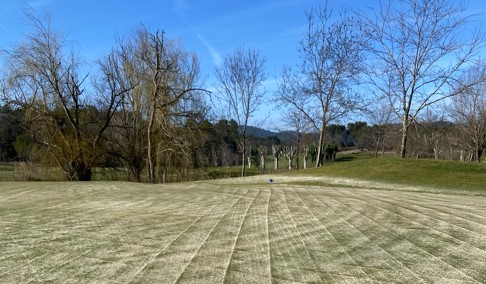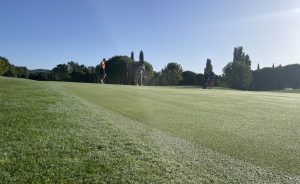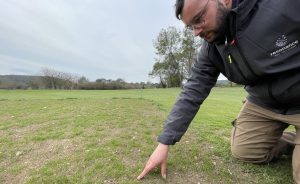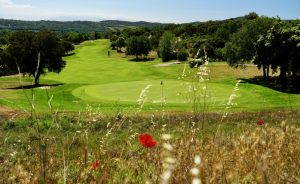Greens, the jewels of every golf course, require regular and meticulous care to remain in excellent condition. At Golf Sainte Baume, the grounds team, in collaboration with the management team, pay particular attention to this, and among the many maintenance operations, aeration occupies a central place.
Although this process can sometimes seem restrictive for players, particularly when it temporarily disrupts the quality of play, it is nonetheless essential to ensure the long-term health of the greens. Mechanical operations are carried out twice a year, generally in March and October.
What is green aeration?
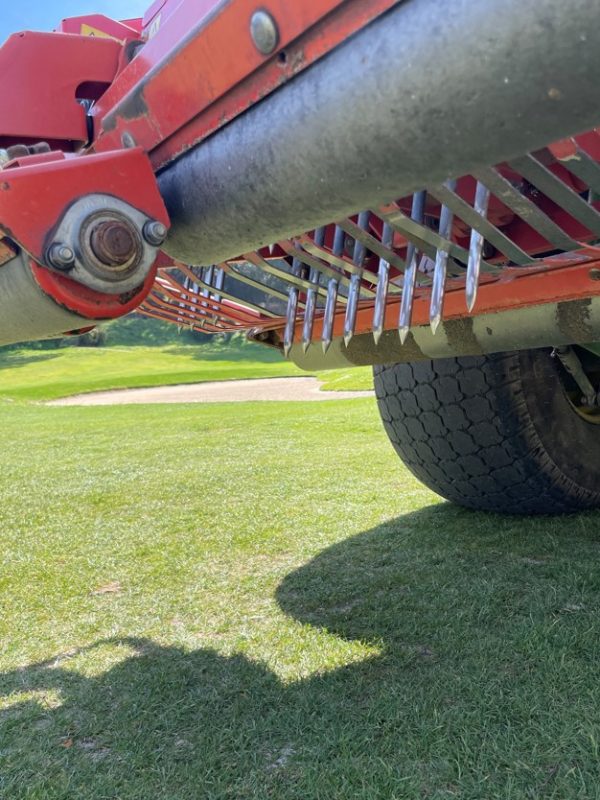
Aeration is a technique that consists of perforating or punching the soil of a green or teeing area using a machine equipped with spikes or hollow tubes. This operation creates small holes in the surface of the turf, generally a few centimetres deep.
Sometimes, aeration or pointing is preceded and/or followed by sandblasting, where a thin layer of sand is applied to fill the holes and improve the soil structure.
Why is aeration necessary?
- Improving soil air and water circulation
Over time, greens can become compacted due to repeated trampling by players and mowers. This compaction reduces the circulation of air and water in the soil, which can limit the supply of oxygen to the grass roots. Aeration opens up the soil, facilitating the penetration of air, water and nutrients to the roots. This stimulates the growth of a denser, more resistant lawn. - Promote drainage
Compacted soil tends to retain water on the surface, which can lead to waterlogged areas or even fungal diseases. Mechanical operation helps to improve drainage by allowing water to infiltrate the soil more easily. A well-drained green is not only more pleasant to play on, it is also less susceptible to damage in periods of prolonged rain or dampness.

- Reducing felt build-up
Felt is an organic layer composed of roots, dead stems and plant debris that accumulates on the soil surface. When it becomes too thick, felt acts as a barrier, preventing water, nutrients and oxygen from effectively penetrating the soil. Aeration breaks up this layer of thatch, allowing better absorption of nutrients by the turf and preventing the onset of disease. - Encourage deep rooting
A strong root system is the key to a healthy green, capable of withstanding periods of drought or stress. Aeration encourages the development of deeper, stronger roots, providing a more aerated, less compacted environment where roots can thrive. Deep roots enable the turf to obtain a better supply of water and nutrients, even in periods of high heat or drought.
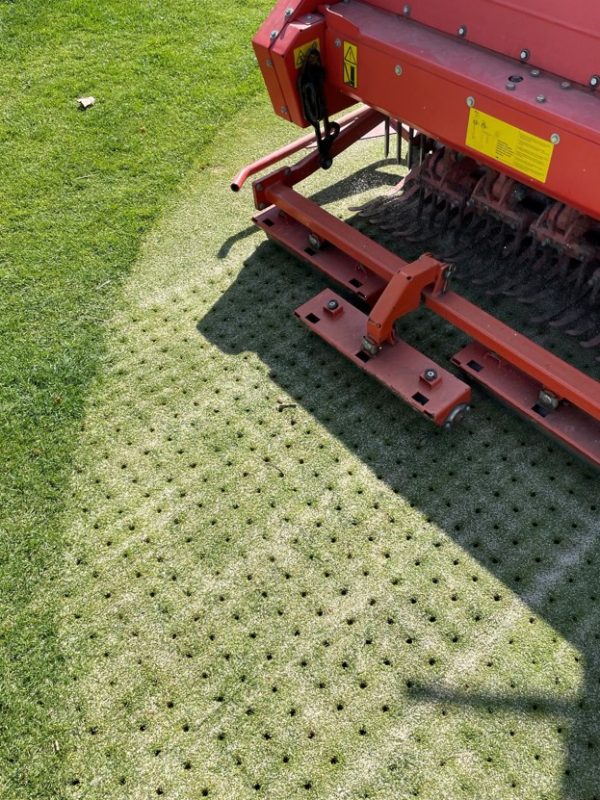
- Preventing lawn diseases
Poorly aerated and overly compacted soil creates a favorable environment for the development of turfgrass diseases such as fungi and bacterial infections. By facilitating air circulation and reducing excessive humidity on the green’s surface, aeration helps reduce the risk of disease and parasites.
How often and what impact on the game?
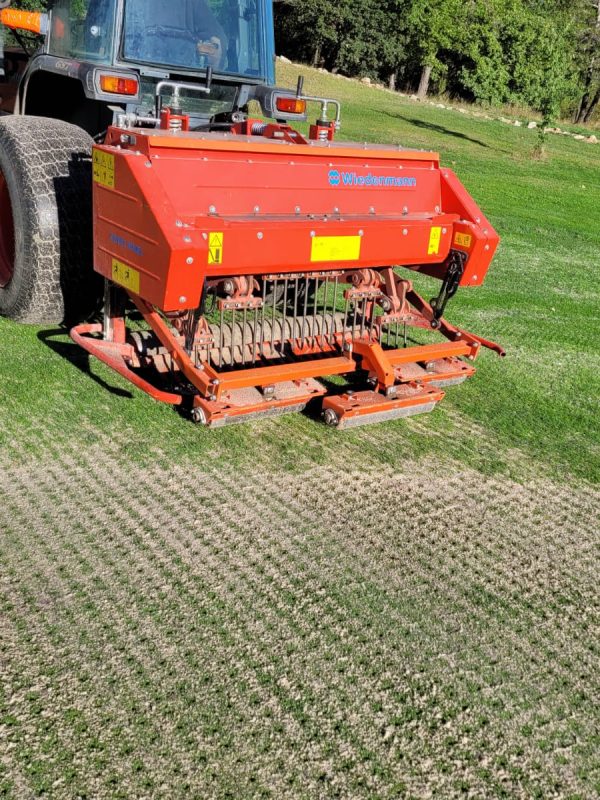
The frequency of aeration depends on a number of factors, including soil type, climate and intensity of play on the course. At Golf Sainte Baume, this operation is carried out twice a year, in March and October.
Although the mechanical operation may temporarily affect the quality of play by creating irregularities on the green surface, its long-term benefits are undeniable. Golfers will understand that this operation is a necessary effect to guarantee the quality and playability of the greens all year round.
What’s more, once the holes have been filled with sand and the turf has recovered, the greens become smoother, faster and more resistant.
Aeration of golf greens is a crucial stage in course maintenance, guaranteeing both turf health and quality of play.
By improving the circulation of air, water and nutrients in the soil, it promotes denser, better-rooted turf that is more resistant to disease.
Although it may temporarily disrupt green performance, its positive long-term effects make aeration an indispensable practice for any golf course wishing to offer optimal, high-quality playing conditions at Golf Saint Baume, as at all the Resonance collection golf courses.

